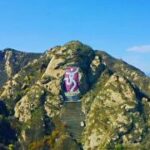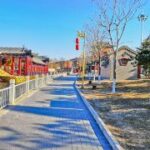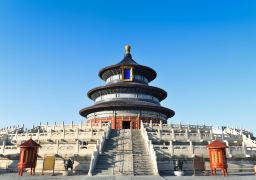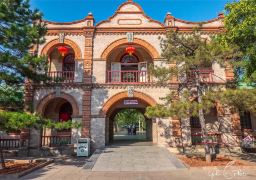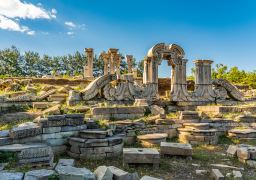Shuiyu Village is located 80 kilometers southwest of Beijing, in the Nanjiao Township of Fangshan District, and is 8 kilometers away from National Highway 108. It is also 10 kilometers from the Yin Gu Dong original area of the National Shihua Cave Geopark, with a current population of 436 households and 1031 people. Among them, there are 141 resident households with a population of 295 people. The village branch consists of 5 members; the village committee is composed of 3 members; and the economic association has 3 members.
These three teams have overlapping roles, with an average age of 48 years. There are 57 party members in the whole village, with an average age of 61 years. In 2003, the total economic income of the village was 16.19 million yuan, including 290,000 yuan in collective income and 15.9 million yuan in self-operating income, with an average labor income of 3980 yuan per capita. The total arable land area of the village is 1714 acres, including 1528 acres of land returned to forestry, with chestnuts and persimmons being the main fruit trees. A total of 45,840 young trees have been planted, with 19,730 existing mature fruit trees, including 8,000 persimmon trees, 11,500 walnut trees, and 230 chestnut trees. Additionally, there are 4,380 acres of forest, among which the Shuiquanbei forest still maintains its original form and has certain tourism development value. Shuiyu Village, a deep mountain village, is distributed along a northwest-southeast oriented ravine, with a terrain that is high in the southwest and low in the northeast, with an average altitude of 500-800 meters. There is a 100,000 cubic meter reservoir built in the south of the village, which has water all year round; three wells with abundant water sources; and tap water entering the streets for human and animal consumption. A 4500-meter water diversion pipeline has been built around the mountain to irrigate young trees with reservoir water. The natural environment of the village is well preserved. Particularly valuable is that there are still more than 600 rooms and over 100 sets of courtyard houses from the Ming and Qing dynasties located on the gentle slope to the east of the village, which are relatively well preserved at present. An S-shaped path made of bluestone runs through the entire village, with the village forming a circular shape, facing south and north, built against the mountain, forming a characteristic architectural style. Representative buildings include the Yang Family Courtyard, the Wengmen, and the Niangniang Temple, among others. The Yang Family Courtyard is located in the west of Shuiyu Mountain and was built during the Qianlong period of the Qing Dynasty. The main construction is based on the northern style, built with stone, and has a layout of four entries and four exits; the gate tower is unique, with a dragon gate ridge, and stone carvings of flowers under the eaves, with two Qing-style stone drums standing on both sides. Wengmen refers to the bridge hole of Dongweng Bridge in the village, on which a white stone is carved with the word ‘Ning Shui’, meaning that the bridge has the function of calming the water and preventing floods. In addition, the village is also named a folk culture tourism village by the Beijing Tourism Bureau, and the famous ‘Shuiyu Zhongfan’ and ‘Daguxie’ come from this place. This year, in order to develop the tourism economy, the village has invested more than 500,000 yuan to place 128 stone mills in the village, recreating the ancient folk culture of the mountain village.Open all year round and all day long.

